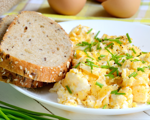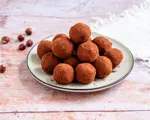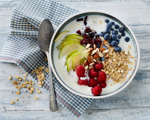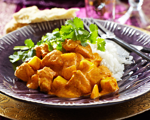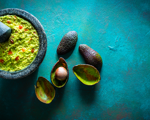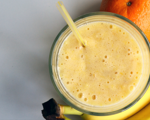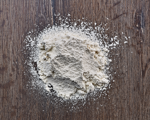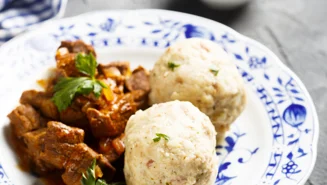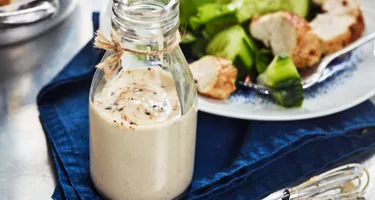
Soy foods are a popular source of protein for those who follow a plant-based diet or want to limit their intake of meat and dairy. Of course, soy protein is also an option if you just wish to enjoy all the possibilities.
Originating from the soybean, soy protein can be found in an array of foods. As we delve deeper into understanding this type of protein, we will explore what it is, where it comes from, and how it compares to other proteins, such as whey. We will also list what foods contain soy protein and take a closer look at textured vegetable protein.
What is soy protein?
Soy protein is a plant-based protein derived from soybeans. The beans undergo a process that removes most of the fats and carbohydrates, leaving behind a product that is rich in protein and thus a suitable source of protein for vegetarians or anyone looking to incorporate more plant-based options into their diet.
Is soy protein a complete protein?
Yes, soy protein is considered a complete protein, which is not the case for all plant-based proteins. Rice protein, for example, is an incomplete protein, and therefore needs to be paired with the right foods if you want a meal containing complete protein. It makes soy protein a popular choice for many following plant-based diets.
Where does soy protein come from?
As already mentioned, soy protein derives from soybeans, a type of legume native to East Asia but now cultivated worldwide. Soybeans are harvested and undergo a series of processes, including cleaning, cracking, dehulling, and rolling into flakes. These flakes are then solvent extracted to remove the oil. The defatted flakes are processed into three high-protein products: soy flour, concentrates, and isolates, each with different protein contents and uses. Soy protein isolate has a protein content of approximately 90 %, while soy flour and soy concentrates contain about 50 % and 70 %, respectively.
Soy protein vs whey protein
Soy and whey protein are both complete proteins but come from different sources. While the former derives from plants, whey protein comes from milk. Whey protein is absorbed quicker than soy protein, making it a popular choice for those who use protein supplements for their workouts. For those with dietary restrictions or preferences, soy protein offers a plant-based alternative to whey.
If you want to explore more plant-based protein sources, check out our article about plant-based protein and our top 15 high-protein vegetables.
Foods with soy protein
Soybeans are renowned for their protein content and serve as the foundation for many plant-based foods. Boasting the highest concentration among all soy-based foods, soybeans contain just below 36 grams of protein per 100 grams, and protein makes up 35.4 % of the total energy value. The range of foods derived from soybeans offers some inimitable textures and flavours. Here are some examples of soy protein in food:
- Tofu, also known as bean curd, is made with coagulated soy milk. It is a versatile ingredient, with the ability to take on the flavour of the foods it is cooked with. There are various levels of firmness – silken, soft, firm, and extra firm – each suitable for different culinary applications. Tofu contains about 13.3 grams of protein per 100 grams, and protein constitutes 43.2 % of the total energy value.
- Tempeh is a traditional Indonesian product made from fermented soybeans. The fermentation process gives it a distinct, nutty flavour and a firm, meaty texture, making it a popular meat substitute in many dishes. The fermentation also aids in the digestion and absorption of nutrients.
- Edamame refers to immature soybeans, typically harvested before they start to harden. They are often boiled or steamed and served in the pod, perhaps sprinkled with salt. Edamame can be eaten as a snack, incorporated into salads, or served as a side dish. They contain 10.7 grams of protein per 100 grams, which gives an energy contribution of 33.3 % of the total energy value.
- Soy drink is a plant-based drink made by soaking, grinding, and boiling soybeans with water. It is a common alternative to milk. Soy drink can be used in a variety of ways – enjoyed on its own, poured over cereal, or used in baking and cooking. The protein content can vary depending on the specific product and preparation, but in general, 100 grams of soy drink contains about 3.3-3.7 grams of protein, equalling more than 40 % of the total energy value.
Textured vegetable protein – what is it?
Textured vegetable protein, or TVP, is a high-fibre, high-protein food made from soybeans. It can come in many forms, including chunks, flakes, or granules, and can be used in a variety of dishes in place of meat. It is often used in foods like vegetable burgers, chilli, and tacos. As a dried product, it has a long shelf life and can be easily rehydrated with hot water or broth.
How to make textured vegetable protein?
The process of making TVP begins with selecting and cleaning mature soybeans. Once cleaned, the outer layer or hull is removed in a process known as dehulling before they proceed to oil extraction. The extracted oil is used for various other products, leaving behind the defatted soy meal, which is the primary ingredient for TVP.

After this, the protein is often isolated from the soy meal. The protein from the defatted soy meal is then cooked under high pressure with steam or water. The process denatures the proteins in the soy meal further and allows for the creation of a dough-like consistency. After cooking, the dough is passed through a machine known as an extruder. The extruder applies high pressure to the dough, which changes the structure of the soy protein, giving it a fibrous, meat-like texture.
Once extruded, the product is cut into appropriate shapes and sizes and then rapidly dried. This drying process reduces the moisture content of the TVP.
How to use textured vegetable protein?
TVP is a versatile ingredient that can be used in a wide range of recipes as a meat substitute. It is often used in vegetarian versions of traditionally meat-heavy dishes, such as chilli, spaghetti Bolognese, or tacos. It can also be added to soups and stews or used as a filling in pies and pastries. TVP absorbs the flavours of the ingredients it is cooked with, making it a versatile addition to your cooking repertoire.
Related Articles
Want to understand different types of protein? Here's everything you need to know:



